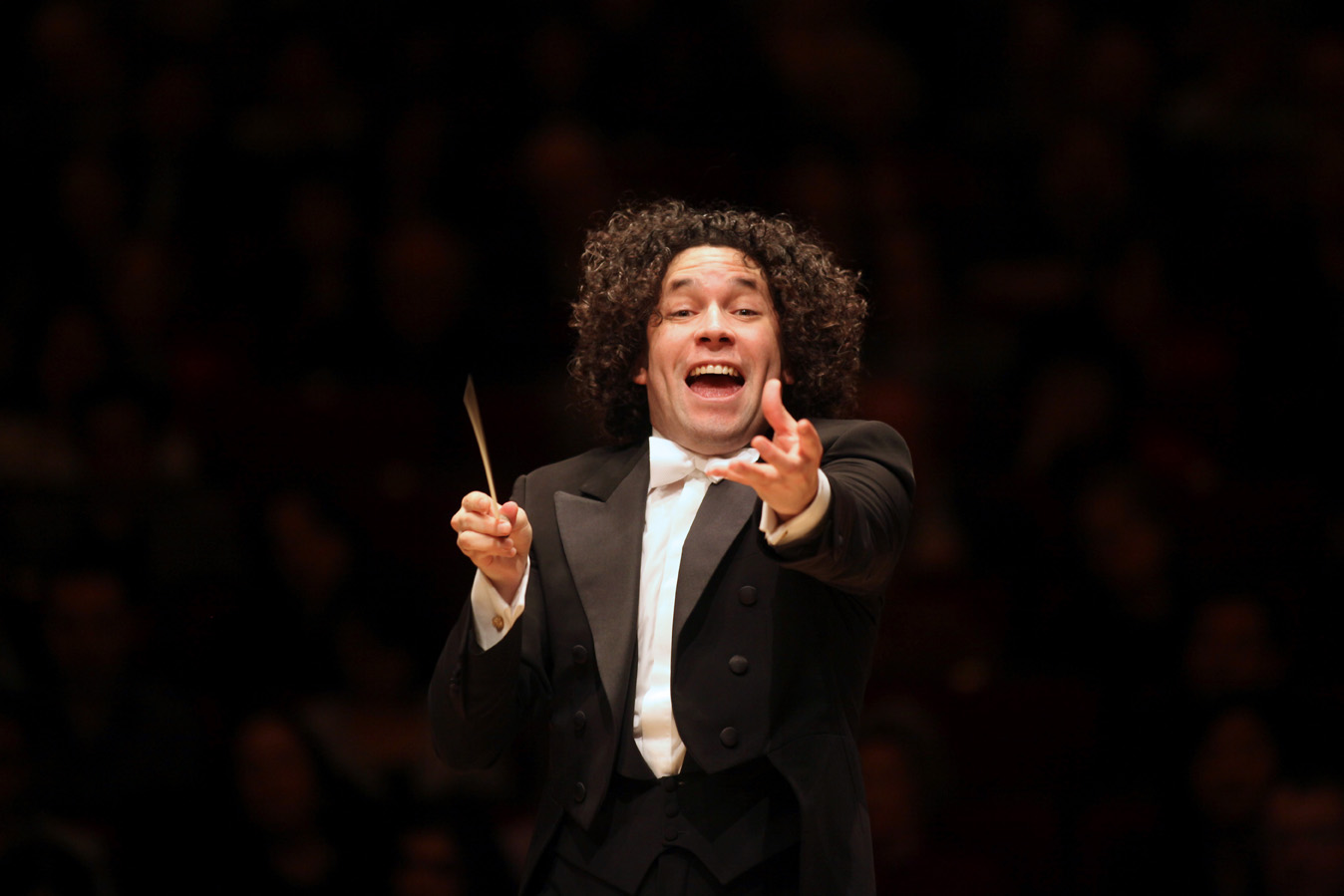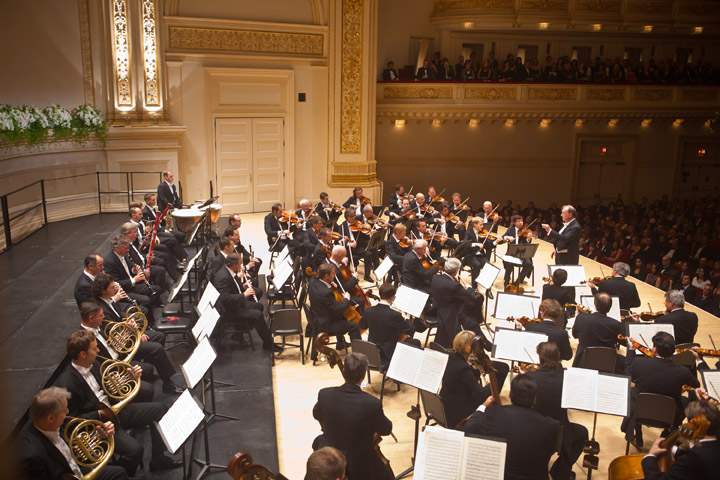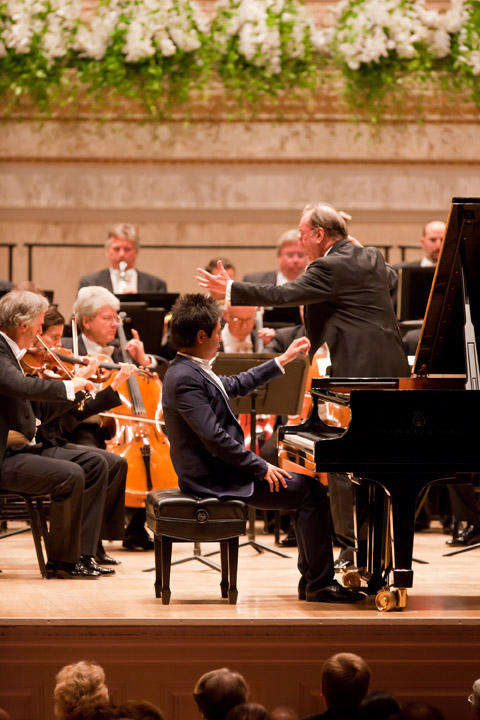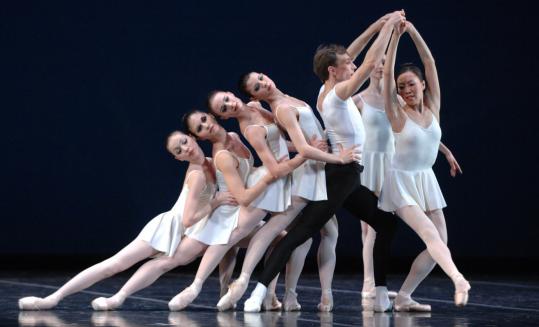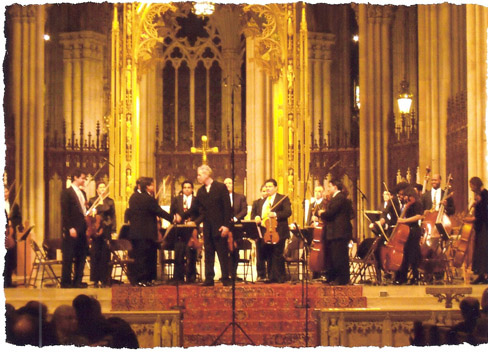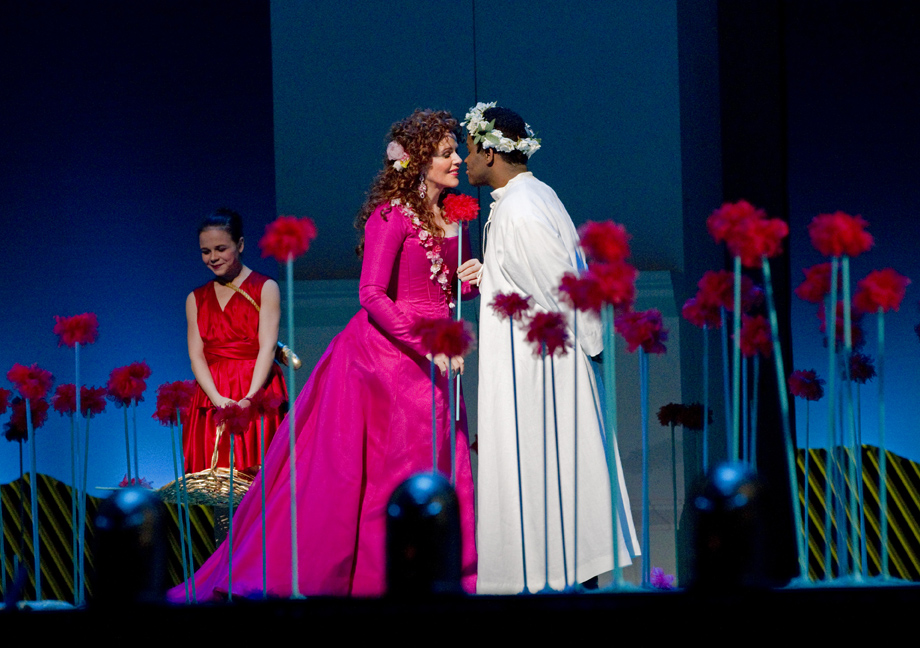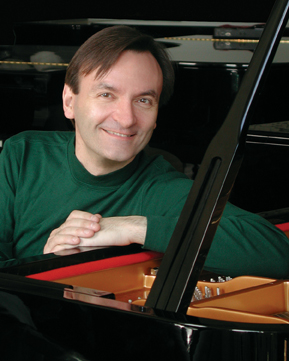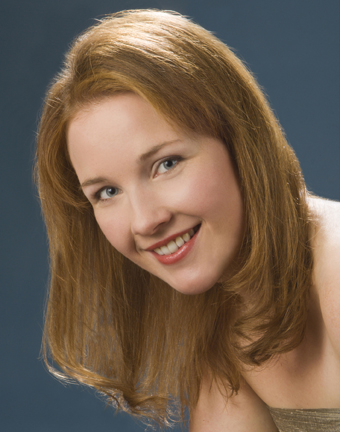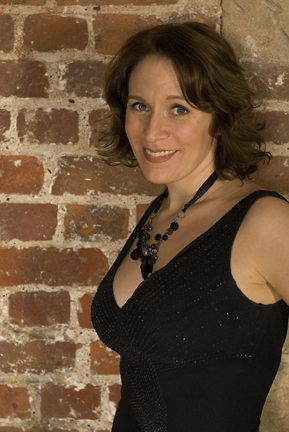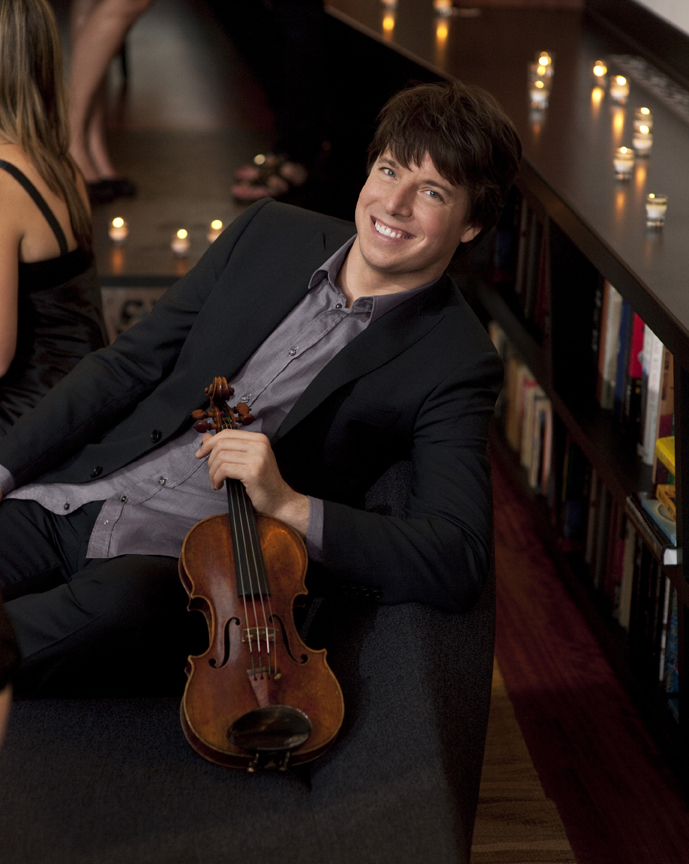For the Vienna Philharmonic’s last two concerts, the young Venezuelan conductor Gustavo Dudamel took over from the veteran Nikolaus Harnoncourt, and a greater contrast can hardly be imagined. Even the seating of the string sections was different: Harnoncourt had the violins on opposite sides of the stage, Dudamel had them side by side. Only a few years ago, Dudamel created a sensation with his extraordinary talent; his amazing youthful accomplishments in his own country and abroad and his meteoric rise to fame culminated in his appointment as the Los Angeles Philharmonic’s Music Director last season. He has impressed New York audiences conducting not only his Venezuelan Youth Orchestra (which he has been leading for eleven years and is now replicating in Los Angeles), but also great orchestras like the New York Philharmonic, and his appearances are always eagerly anticipated. The Vienna Philharmonic’s concerts were no exception.
The three romantic masterpieces on the final program: Brahms’ “Tragic Overture,” Schumann’s Cello Concerto, and Dvorák’s “New World” Symphony, seemed a perfect choice for displaying Dudamel’s boundless energy, exuberance, and involvement. And indeed his performance of the Brahms was full of promise: noble, somber and austere, it struck a fine balance between passion and restraint, intensity and release. There were no extremes of tempo or dynamics, none of the whispering and crashing of the Vienna Philharmonic’s earlier Beethoven program.
If anyone whispered, it was Yo-Yo Ma in the Schumann. Of all the great cello concertos, this is perhaps the least soloistic; it feels less like a showpiece than a conversation between soloist and orchestra. Emphasizing its intimacy, inwardness, and the poetic, almost spoken quality of its phrasing and melodic rise and fall, Ma interacted closely with the concertmaster and with the principal cellist in their slow movement duet. Unfortunately, his best intentions were defeated by the size of Carnegie Hall; his playing had all its customary beauty, variety and expressiveness, but his tone was often lost in the large space. Nevertheless, he received a standing ovation, and, after embracing the conductor and as many members of the orchestra as he could reach, notably the principal cellist, he returned to play the first movement of Bach’s G-major solo Suite.
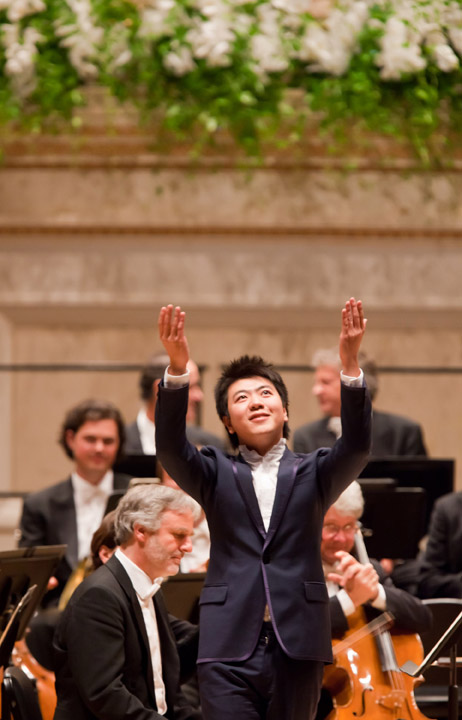
The Vienna Philharmonic Orchestra Led by Gustavo Dudamel in Stern Auditorium/Perelman Stage with featuring artist Lang Lang. Photo Credit - Chris Lee
If the Brahms, with its avoidance of exaggeration, had brought out the best in Dudamel, the Dvorák did the opposite. Everything was excessive and overdone. There was no whispering, but plenty of crashing; this must have been the loudest “New World” within memory. The sound was so thick that many important melodic and harmonic details were lost; the build-ups were so precipitous that climaxes were often reached long before their time. The temptation to draw maximal sound from a great orchestra must be irresistible to a conductor, especially a young firebrand; Dudamel seemed to be unleashing the elemental forces of nature. His conducting style is marked by an almost unremitting tension; he seems like a taut wire, physically and emotionally. Conducting from memory, his gestures were angular and stabbing, producing lots of aggressive accents, or large and sweeping, producing great masses of sound. The result was a “New World” Symphony long on drama, intensity and drive, short on lyricism and repose. The audience responded with the sort of screaming associated with rock stars rather than classical conductors; the encore, the Waltz from Bernstein’s Divertimento, was blessedly quiet.
Though it is true that Dvorák’s “American” works were influenced by native American idioms, his own native Czech idiom is never far away; in fact, his music seemed to get increasingly Czech as he became more homesick. If he had lived long enough to hear the words “Going home” later added to the English horn melody in the “New World” Symphony’s slow movement (played beautifully at this concert), he might have felt that they echoed his own sentiments.

